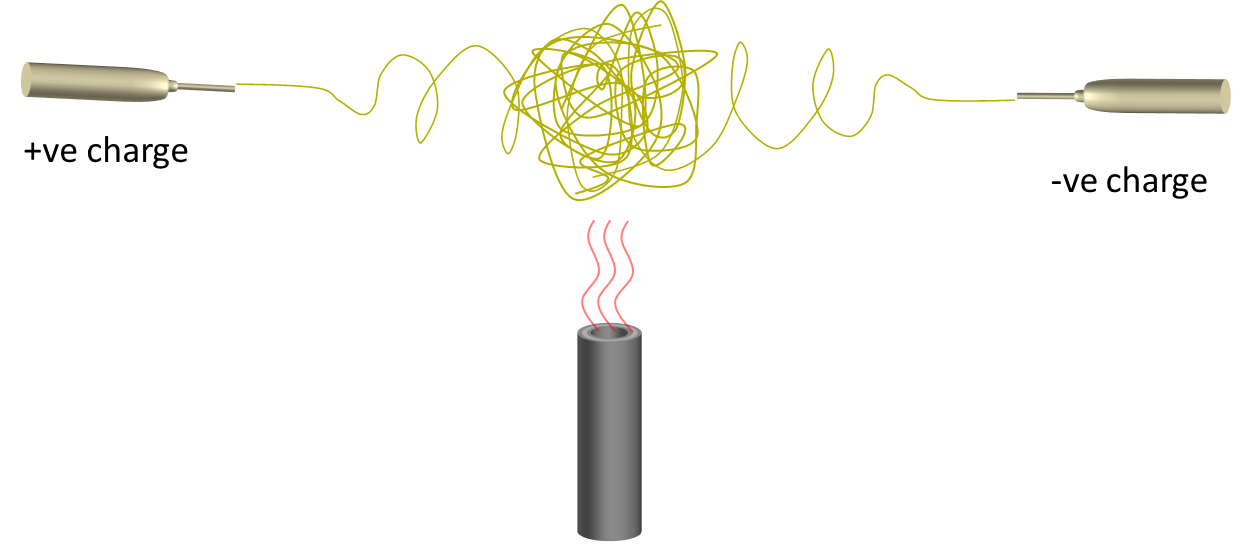3D fibrous scaffold from opposing polarity electrospinning jets

Schematic representation of using a heat source to generate an uplifting airflow to support the growing clump of fibers. |
Opposing polarity electrospinning jets uses two or more spinning nozzles which are charged using opposing polarity (either positive or negative). Since the electrospinning jets contain opposing charges, they will be attracted to each other instead of being repelled which cause them to collide into one another. The challenge of this electrospinning technique is that the point of collision between the chaotic jets is random. Without any external guidance, the direction of the growth of the clumps is random as well. Opposing polarity electrospinning jets has been successfully used for the fabrication of continuous yarn where the clumps are being drawn to a rotating mandrel for continuous drawing and winding as the clumps are being formed. To form a 3D fibrous scaffold, a degree of control in the growth of the fibrous clumps is required.
Suspending the fibrous clump in 3D spatial environment is required to form 3D scaffold. Presence of any hard surface will cause the initial weak fibrous clump to press onto it and form a 2D mesh instead. To create this 3D spatial environment, Chang et al (2016) used a light air flow to create a column of uplifting air to support the formed 3D fibrous clump in mid-air. This prevented the fibrous clump to fall onto a hard surface under the pull of gravity. They were able to support the growing volume of 3D polyvinylpyrrolidone (PVP) fibrous clump by increasing airflow from 0 m/s to 0.1 m/s. The airflow was created by having a heat source below the forming fibrous clump. Using this concept, they were able to form blocks of 3D fibrous scaffold more than 4 cm across.
Last updated: -
 ElectrospinTech
ElectrospinTech